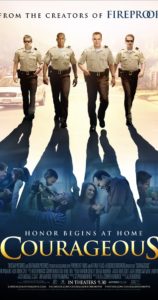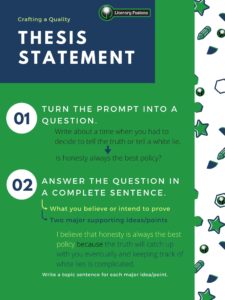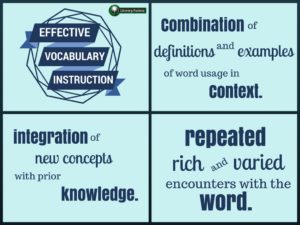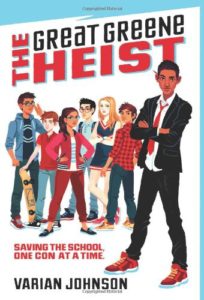** Contact us if you would like to have our evidence-based, engaging Mentor Text or Readers’ Workshop session come to your campus! **
This book was on the Lone Star List … in 2015! Yep. This wasn’t the first time I picked it up. The first time, I was part way through reading it and the life I love threw me a curveball, so I had to put it down. It is, however, never too late to pick up an “oldie”.
Why I Finished It:
This is definitely a “me” book. I know Sherry read it as well, because, well, she’s a librarian, but this definitely is more in my wheelhouse than hers. I’m glad I finally went back to it! The lead character, Jackson Greene is a con master in the making. There are hints that he takes after his paternal grandfather and that his older brother definitely mastered the skills as well. Jackson is learning how to deal with this genetic gift and try to use it for good rather than evil. After a con that put him in deep water at the school and with his love interest, Gaby, he has decided to walk the straight path. Well, that is until it looks like a con is being played against Gaby. Jackson, not willing to let this go, pulls off one last con, a con to right a wrong.
I kept reading because it was middle school fun. I spend my life in the world of middle school. Not only do I supervise student teachers in middle school, I come home to two middle school-aged children. This book nailed it! I had to find out, just like middle school kids will want to know, if Jackson accomplishes his con, how he does it, and if he gets the girl!
Who I Would Give It To:
Put this book in the hands of any middle schooler you know! They will love it! It is not a difficult read and it’s engaging, so it will be a win/win. That being said, the reader is introduced to A LOT of characters in the beginning and it wasn’t super easy to keep them organized. Give students, especially struggling readers, a bit of info on the key players, to help them keep them straight as they read.
Integration Ideas:
Theme and Messages, Making Connections, and Literature Circles
I would say that a major theme in this story is honesty. Is honesty always the best policy? I would use that guiding question throughout this novel study. This book would probably be best used as a literature circle book or a read aloud. Before even giving the book to the kids, ask them: Is honesty always the best policy? Is it ever okay to not tell the truth? Have students answer these questions and share with others. Have students give specific examples to back up their opinions on the matter. Do they have examples from other books? The book Liar, Liar by Gary Paulson comes to mind.
I would add this to my thematic Literature Set on honesty. It contains:
- Liar, Liar by Gary Paulson
- Con Academy by Joe Schreiber
- Paper Things by Jennifer Richard Jacobson
- The Great Greene Heist by Varian Johnson
- The Fourth Stall by Chris Rylander
After having students write their personal stories and answers to whether or not honesty is always the best policy, I  would read aloud The Empty Pot by Demi. While this is a picture book, it is a powerful way to begin this unit. As you read through the picture book, select stopping points to do a think aloud about honesty being the best policy. In the end, reflect as to whether in this example honesty was the best policy or not. Model for the students how to use text evidence to support your opinion. Another possibility is to use a movie clip, such as this one from Courageous, and ask the same questions.
would read aloud The Empty Pot by Demi. While this is a picture book, it is a powerful way to begin this unit. As you read through the picture book, select stopping points to do a think aloud about honesty being the best policy. In the end, reflect as to whether in this example honesty was the best policy or not. Model for the students how to use text evidence to support your opinion. Another possibility is to use a movie clip, such as this one from Courageous, and ask the same questions.
Hand out the books the students chose to read. Have students decide in their literature circle the due dates and expectations. While students are reading, their job, everyone’s job, is to answer the question, “Is honesty the best policy”. They will pull information and evidence from their book to answer this question. When the students meet with their group they will discuss the answer to this question based on the characters they are reading about. Then all groups will come together as a class to share if their group is leaning yes or no on the issue.
Writing an Essay
With all of this reading and discussion, students have been set up to write an essay (with citations)! Once the students have finished reading, they will have been answering the essay question the whole time and they have been documenting text evidence to support their opinion. Now they can write an essay using Is honesty the best policy? as the prompt. I would follow this pattern in my Writers’ Workshop:
-

(click to download as PDF) Two major ideas: The students need to have at least two major ideas as to why honesty is or isn’t the best policy. Many times students want to give specific examples as a major idea. I would make sure that students have broad ideas that can be explained in a paragraph with the examples to support it, not the other way around.
- Thesis writing: The thesis the students write will need to contain their answer (It is the best policy or it’s not the best policy) as well as the two (or more) big points they will discuss.
- Topic sentences: Students will write the topic sentence for each of their major ideas. Then they will write notes for what will go in the paragraph. They should “explode the moment”. They should have facts, details, and examples from the story they read.
- Introductions: Students will be given a few mentor examples of different types of introductions and then time to write their own. The introduction will have a hook, transition sentences, and the thesis.
- Conclusion: Students will practice wrapping up their ideas with two strong sentences.
Then, of course, they will be given time to write!
More on Theme
There is definitely a theme of political corruption in this story. Do you want to go there? Your call. Me?? I’m going there! Fake news, Russian involvement, political trust! Oh yes! Just kidding. You could pull in current events, and I suggest you do if you are brave enough, but you should definitely use this book as a springboard to talk about political corruption in general. In this story, there are major issues of power in politics. On page 213, Jackson says, “The needs of many outweigh the needs of a few.” This line could open up a whole discussion on its own. But there is bribery and plans to get the results desired during the election process. There is slander (117), power shifts (165), and explanations of how it isn’t fair all the time (164).
Vocabulary

Please, please, please don’t use ALL these words, choose about 10 you would like the students to know and teach those. You could front load the other words. I highly suggest you teach the ones that have an asterisk for this book.
- scheming (1)
- forge (1)
- jeopardize (2)
- unopposed (7)
- sophisticated (8)
- theoretically (16)
- rivaled (19)
- liberated (20)
- diving intervention (23)
- exemplary (26)
- snide (32)
- intel (45)
- disprove (46)
- hesitated (47)
- haughty (48)
- impeccable (49)
- prestigious (49) **
- generalizations (52)
- confiscated (53)
- heist (58) **
- infamy (58)
- seamless (72)
- spectators (77)
- relented (80)
- barricade (80)
- ambled (83)
- goad (83)
- obligated (88)
- viola (99)
- coerce (112)
- mediocre (139)
- ransacked (141)
- escalate (144)
- retaliate (144)
- hypothetically (161)
- baritone (178)
- inaugural (178)
- tousled (180)
- malfunction (182)
- dismissively (182)
- sympathetic (187)
- ricocheted (190)
- incognito (200)
- diversion (200)
- cowered (209)
- nullify (210)
- reluctantly (212)
- grimaced (218)
- sulking (218)
- incentive (221)
Each character in this story has a distinct personality that builds throughout the book. In addition, they go through a wide range of emotions throughout the story. Arm students with words for feelings (disappointed, encouraged, pitiful, fearful, etc.) and give students character trait words (honest, hard-working, dedicated, sneaky, etc.). Have students choose one or two characters to track through the book. Have them give evidence that supports their character traits as well as their emotions throughout. Does their personality change through the story? If so, what specific event or situation encouraged the change? Do you think it will last?
Keith: Keith is the student who is running against Gaby. He is running for all the wrong reasons and he isn’t extremely well-liked so he is having to cheat his way to the lead. He is arrogant and a bit of an elitist to his peers, but the other side of him is a sad child with low self-esteem, who feels he will never meet his Dad’s approval.
- he has a conflict with Jackson (48)
- a “holier than thou” attitude (14)
- feeling a little beat down (116)
- arrogant (117)
- determined (118)
- fearful and down that he might not succeed (146)
- scared of disappointing dad (164)
Jackson: Jackson, as mentioned above, is a smooth and confident boy. He is well-liked and definitely has leadership qualities. He is able to convince groups of people to do things they might not want to. He is also shrewd and smart.
- signs of how analytical he is (20)
- a bit of his family history that explains quite a bit (25)
- leadership (59-61)
- tie and suit (64)
- smooth (97)
- knowledge about “shady” things like picking locks (105)
- bribery (115)
- shrewd (144-145)
- confident (194)
- smug (218)
Visualization
There are some great places where the author used figurative language or sensory language to really paint a picture for the reader. I don’t think I would have the students locate these while they read, I want them focused on theme and character, but I would pull out the sentences before they read it and either illustrate, act it out, or discuss the visual that was “painted” by the author. We would emulate these in our own writing and discuss the power it has in the writing. There are plenty, here are a few:
- “his trademark red tie skewed slightly to the left, a yellow No. 2 pencil balanced behind his ear, and a small spiral-bound notebook tucked in his right jacket pocket” (p. 1)
- “he wove through the mob of students at the vending machines and continued toward the exit” (p. 1).
- “No matter how much the idea tingled his spine” (p. 2).
- “Gaby sat at one of the large tables, her eyes glued to her paper, her hand scribbling away. He proceeded toward her, his feet silent against the red plush carpet” (p. 36).
- “It was also as boring as ketchup flowing out of a bottle” (p. 155).
- “Instead of looking out at the crowd, Gaby stared at the podium as she crossed the stage, focusing on the click of her heels against the polished hardwood. She heard one clap, then two, then three, and then, all at once, a sea of applause” (p. 157).
- “Jackson swallowed what felt like sand” (p. 160).
- “At the worktable in the middle of the shed, Hashemi fiddled with the guts of a small microphone with one hand while pecking at his laptop with the other” (p. 166).
- “The delivery man seemed to hesitate as he entered the copy room, his gaze lingering on the door handle, the metal sparkling underneath the fluorescent lighting” (p. 175).
- “Hashemi’s face was still as red as spaghetti sauce when he returned” (p. 187).
How have you used this book in your class?









Leave a Reply